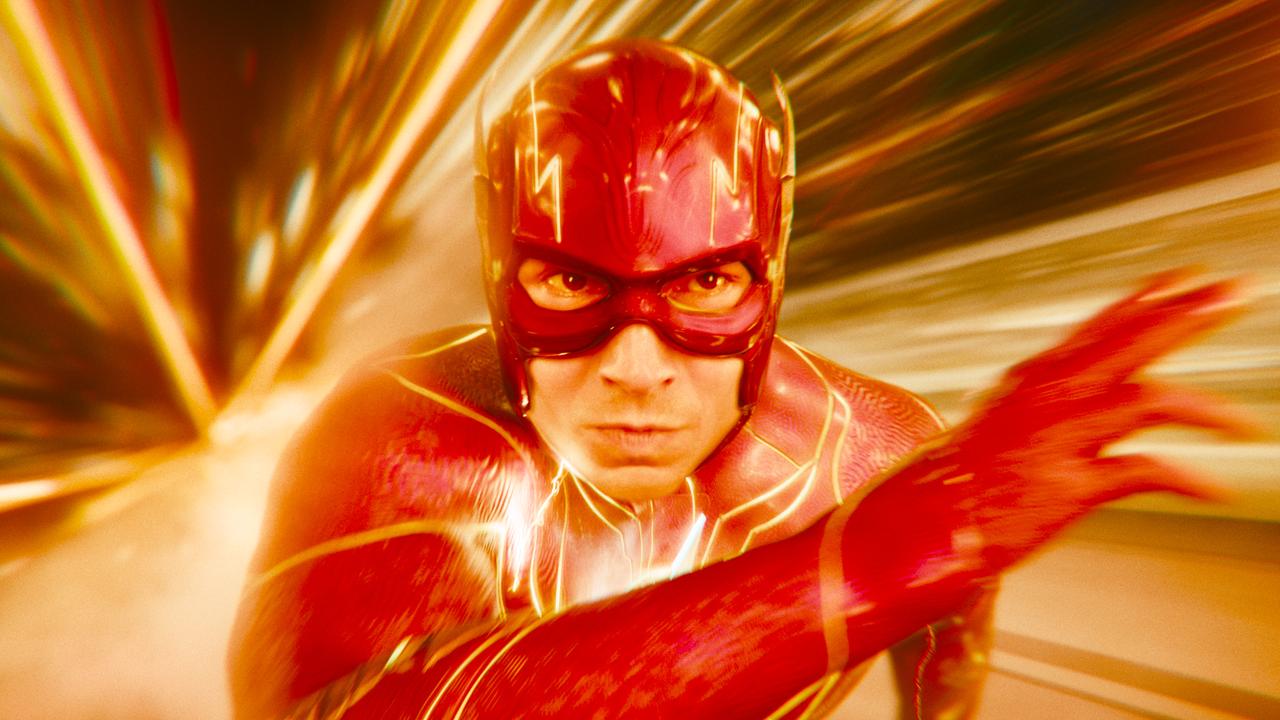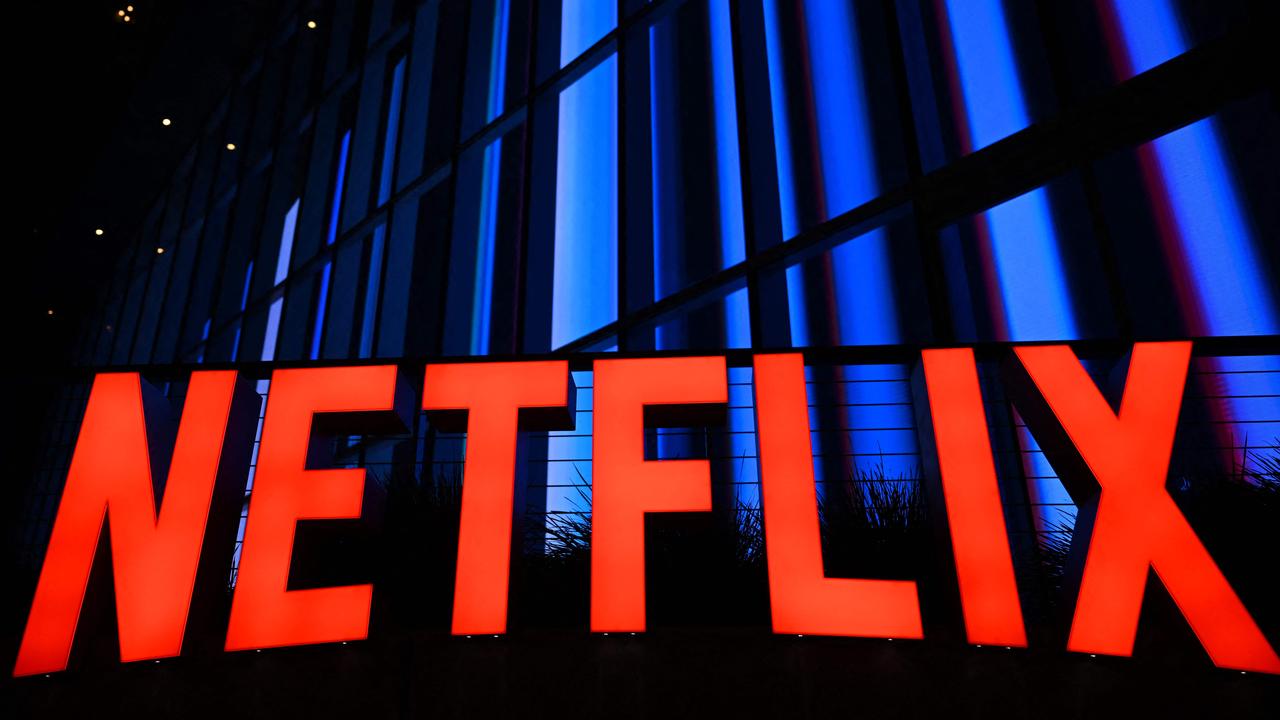Massive movie flop finds new fans on Netflix
One of the most notorious big-screen failures of the past few years is now on Netflix – and it seems audiences are giving it a second chance.
None of the big movie releases coming up over the next couple months are about DC Comics superheroes like Batman, Superman, or Wonder Woman, as they have been over the course of years and decades.
Instead, social media is inundated with photos arriving from somewhere near the set of Superman: Legacy, next summer’s big DC reboot kickoff, directed by new DC impresario James Gunn.
So it doesn’t seem quite right that just a year ago, The Flash was speeding through its brief cinema run. Now the movie is sitting pretty in the Netflix Top 10. The recent run of DC movies has never been more accessible. But can this do much to turn their reputations around after the fact?
The Flash was not the final DCEU (DC Extended Universe) movie. Rather, it came out during the biggest and worst year in the franchise’s decade-long history: A series that had previously released one or two movies per year, often big hits, banked four post-pandemic titles and, thanks to corporate uncertainty, wound up putting them out not unlike a fire sale.

Over the course of twelve months, this quartet – put together – grossed only slightly more in the U.S. than Batman v. Superman: Dawn of Justice. But while it was technically followed by the relatively low-key Blue Beetle and the moderate global success of an afterthought Aquaman sequel, The Flash is the DCEU movie that feels the most likely a finale, however accidentally.
On paper, The Flash looks like it should have been a hit, regardless of its place in the DC cycle. It combines the head-spinning multiverse antics that audiences enjoyed in multiple Spider-Man movies with MCU-style cameos and No Way Home-style revivals – including a major supporting role for Michael Keaton, reviving his take on Bruce Wayne and Batman when the Flash (Ezra Miller) engages in some history-altering time-travel that branches off into an alternate universe.
Speaking of which, that time-travel angle is heavily indebted to Back to the Future – the long-gestating movie was supposedly offered to Robert Zemeckis at some point – and aims for a similar mix of speedy entertainment and emotional underpinnings. The stereotypical grimness of the earlier DC movies like Batman v. Superman is replaced with bright, colourful super-antics mixing comedy, action, and pathos.

On a purely logistic level, The Flash’s introduction to multiversal storytelling also meant that it offered an infinitely adjustable reboot to the DCEU. Wanna keep popular figures like Jason Momoa’s Aquaman and Gal Gadot’s Wonder Woman in the fold, while retconning or recasting other parts as needed? No problem; The Flash could basically serve as DC’s version of X-Men: Days of Future Past, which pulled off a similar trick and became one of that series’ most popular instalments in the process.
Yet just as many lousy circumstances rose to meet what seemed to be the movie’s major advantages. Star Ezra Miller engaged in a years-along struggle with their mental health that seemed to include some abusive and criminal behaviour, making them a major liability in the press (and leading plenty of online pundits who have no idea how movies work suggesting that it would make more sense to simply throw away a completed movie to take a righteous stand against Miller).
As a result, there wasn’t much star promotion for the film, and plenty of uneasy feelings about the character’s future. Ultimately, Miller couldn’t defeat the Flash as easily as corporate shenanigans; the Warner Bros/Discovery merger of 2022 led to new Warner president David Zaslav making some boldly annoying DC decisions, including the cancellation of a mostly-finished Batgirl movie which, like The Flash, featured Keaton donning Batman’s cape and cowl again. Though the general public probably wasn’t aware of this fiasco, it couldn’t be easy to gin up excitement for Keaton’s return among the hardcore fans after deciding that a recent performance in that same role isn’t worth ever releasing, and that the movie’s universe may not be worth saving.

The Flash, while late to screens considering the project had been in development for a decade, was also at the forefront in the bold new field of audiences kinda getting sick of this superhero s**t. Not for everything, mind – there will probably be at least one big hit superhero movie annually for the next three or four years – but the continuity-heavy, cameo-packed, epic-crossover that somehow feels like both a new introduction and an epic farewell retreated to its natural habitat as a niche experience just in time for The Flash to crash and burn.
A year later, those cross-purposes are also exactly what makes the movie weirdly fascinating. The Flash was a simultaneous victim of overhype and undersell. It’s frequently cartoony-looking and distractingly eager to please, nowhere near the top-tier superhero movie described by noted comic-book fan and film expert David Zaslav (as well as admittedly more credible company shill James Gunn) prior to release. It’s also interesting and weird in ways that make it pretty fun, especially when juxtaposed with other DC movies, which rarely provided the frictionless experiences of the less inspired MCU entries.

Despite multiple big-name cameos, the movie really does focus in on Miller’s Barry Allen, to the point of making the performer both first and second lead, when Barry encounters an alternate-past version of himself who hasn’t gone through the necessary trauma to turn him into a superhero – and therefore isn’t much help when General Zod (Michael Shannon, reprising his Man of Steel role) threatens a now superhero-free world. The scenes with one Barry training the other in the art of superheroics have a pleasing zaniness; they even cutely echo the bit in the misbegotten Justice League movie (the non-Snyder cut, to which The Flash serves, amusingly, as a relatively direct sequel/companion) where Ben Affleck’s Batman (who also appears here) coaches Barry through a bigger rescue operation than he’s ever faced before.

Keaton’s Batman, meanwhile, goes from feeling like a perpetual outsider from society to feeling like a profoundly odd fit for a movie that has no gothic undertones or freakshow poetry whatsoever – yet there is a comic-book-gone-cinematic spectacle to seeing Keaton’s Batman, Sashe Calle’s very Man of Steel-y Supergirl, and multiple Miller Flashes mashed together into an unworkable climax, whose actual text is how unworkable it is! The movie pits Barry’s desire to “fix” the past against the ever-shifting variables that keep bending fate in the opposite direction – pulling in ghoulish CG visions of past and alternate DC movie heroes in the process. In a way, the movie cops to the dizzying and mercenary task of attempting to make a crowdpleasing super-movie that somehow fits into an increasingly unwieldy world of similar stuff.
Does director Andy Muschietti bring this mess to an ultimate rousing conclusion? Not exactly; because of the movie’s own uncertainty over whether it’s tweaking the DCEU, soft-rebooting it, or sending it off into the sunset, The Flash waffles and equivocates over its takeaways, mulling philosophical lesson-learning, emotional catharsis, ironic comeuppance, or yet more wacky antics, finally ending on a surprise cameo chased by a moment of hapless, slapsticky callback that’s frankly a lot more off-putting than the much-derided mid-credits gag from Aquaman 2.
More Coverage
This is a superhero movie made in what seems like a long-term, slow-motion panic, showing up tragically late to the party by the time it got all of its ducks in a row. It’s also, removed from breathless fanboy hype and box-office-nerd antihype, a messy superhero adventure unlike any other, even the ones it’s trying to imitate.
That’s the one aspect of the movie that makes it fit with the presence of Keaton’s oddball Batman: It’s a bit of a freak show. Echoing the famous line Keaton gamely yet nonsensically reprises, it gets nuts.
This story originally appeared on Decider and is republished here with permission.





